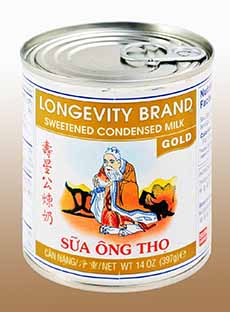Fat Miilk Vietnamese Coffee, A Robusta Experience
|
|
October 1st is International Coffee Day, and we’ve got an international brand for you: Fat Miilk, from Vietnam. Unlike the arabica coffee beans used in most of the coffee consumed in the U.S., Fat Milk is made from the robusta varietal, a bean with twice the caffeine and twice the antioxidants. The result is “coffee more robust than your everyday joe,*” says the brand. The beans are sourced ethically and directly from Vietnamese farmers. Vietnam is the world’s number-one producer of robusta beans, and it’s the coffee drunk throughout Vietnam. If you’ve never had robusta, you’re in for a special taste experience: nutty, chocolatey, bold, and full of character. The strong and robust flavor is best achieved by dripping the coffee, through a device called the phin drip (photo #4). The company’s goal is to introduce Vietnamese coffee culture, tradition, and flavor to the U.S., and to show that robusta beans, which are often portrayed as inferior to robusta beans, deserve a place in our own coffee culture. One of the founders knows Vietnamese coffee as well as anybody: Her family has a coffee farm in the Central Highlands of Vietnam. There are currently four roasts: The line is also available at stores in Chicago, Missouri and New York. Here’s a store locator. You can purchase whole or ground beans and brew them as you currently brew coffee. But the best Vietnamese coffee brewing employs a combination of drip (pour-over) and French press methods. And before we get into the details, let us say that these are a terrific gift for coffee lovers. Traditional Vietnamese brewing uses a device called a phin, which sits on top of the cup. Use the sweetened condensed milk, and your drink will be rich, creamy and sweet—almost a dessert drink. Use your regular milk of choice, or no milk at all, and you’ll still have a great cup of coffee. There’s a procedure guide to brewing on the Fat Miilk website. It’s easy to brew; and after the first try, you’ll be a pro. In the mid-19th century, during the rule of French Indochina, the French introduced coffee to Vietnam. The soil, climate and elevation were ideal for coffee farming. The Vietnamese became prolific producers and exporters of the beans. Vietnam is now the world’s second-largest producer of coffee, behind Brazil. The drink of choice in Vietnam is iced coffee with sweetened condensed milk, or cà phê sũ’a đá. The addition of the canned milk was inspired by the French, when fresh milk was hard to procure. The water buffalo is an integral part of agriculture in Vietnam. They are a symbol of strength, loyalty, and prosperity. They’re treated as family, and are often a farmer’s most valued possession. The water buffalo in Fat Miilk’s logo embodies the animal’s faithful spirit to humanity and tenacious work ethic. It gets quite poetic: Ah, if only we Americans waxed poetic about our own beloved family members. |
|
|
________________ *Cup of Joe, or Joe for short, was named after Admiral Josephus “Joe” Daniels (May 18, 1862 – January 15, 1948), Chief of Naval Operations, who outlawed alcohol on board ships and ordered coffee as the beverage of service. The term, “Cup of Joe” followed; and because sailors wanted their cup of joe hot, Hot Joe was shortened to Hojo. But according to Snopes, this is a myth. Read the Snopes article for three other theories. Josephus Daniels was a newspaper editor and publisher from North Carolina who was appointed by President Woodrow Wilson to serve as Secretary of the Navy during World War I. He was also a close friend and supporter of President Franklin Roosevelt and served as his Ambassador to Mexico from 1933 to 1941. Daniels banned alcohol from United States Navy ships in June 1914. This led to the folk etymology that a “cup of joe,” referring to a cup of coffee derives from Daniels’ name. However, this appeared to be a myth, rather than the truth. |
||
@fatmiilk








